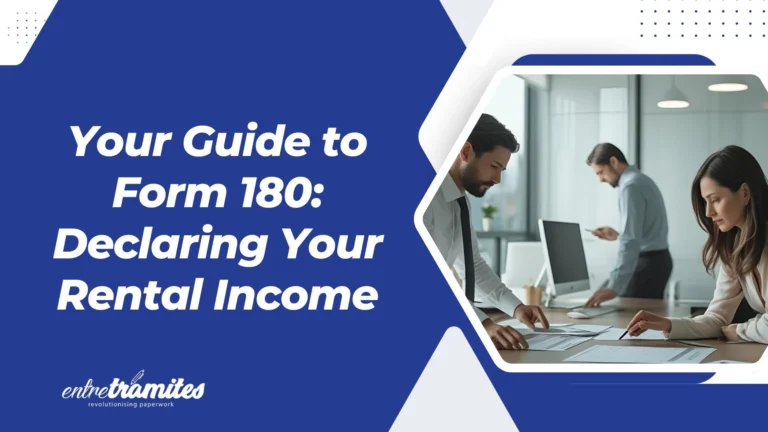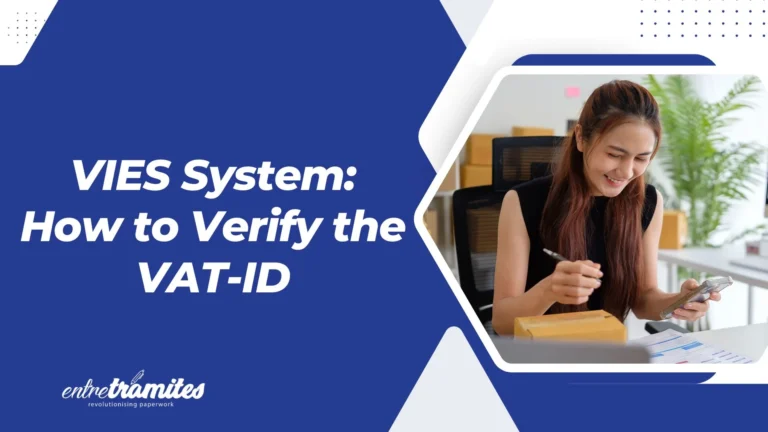If you own urban properties and earn income from renting them out, Form 180 from the Spanish Tax Agency is a fundamental document on your fiscal calendar. This annual summary of withholdings and payments on account for certain income derived from the rental or sublease of urban properties is a key informative declaration. Knowing its details, deadlines, and how to fill it out correctly will save you headaches and potential requests from the Tax Agency (Hacienda). This practical guide is designed for owners and managers, ensuring you have all the updated information to handle Form 180 effectively.
What Is Form 180 and When Is It Mandatory?
Form 180 is an annual informative declaration that summarizes the withholdings and payments on account for income from the rental or sublease of urban properties. In other words, if you, as the owner of a commercial space or an office (not a habitual residence), have received rental income that has been subject to IRPF (Personal Income Tax) or Corporate Tax withholding by the tenant, you must submit this form.
Who is obligated to present it?
The obligation to submit Form 180 falls on those people or entities who have paid income derived from the rental or sublease of urban properties and, therefore, have performed withholdings on account of IRPF or Corporate Tax. This mainly includes:
- Companies and freelancers: If you have rented a commercial property to a freelancer or a company, they are the ones who will perform a withholding on the rental invoice and, therefore, will be the ones who include you in their Form 180.
- Communities of property owners: In certain cases, if the community of owners rents out a space (for example, a doorman’s lodge or a community room) and the tenant is a company or professional, the community could also have obligations related to this form if withholdings are made.
It is crucial to understand that if you are a private individual who rents out a habitual residence to another private individual, there is no withholding on the rent and, therefore, you are not directly involved in the submission of Form 180 from the perspective of the income recipient. However, if you rent a commercial space to a company, that company will apply the withholding and should issue you a withholding certificate, which you will then use in your annual tax return. The company that pays you will, in turn, include you in their Form 180.
Deadlines and Methods for Submitting Form 180
Form 180 is an annual declaration, and its deadline for submission is during the month of January of the year following the tax year to which the data refers. For example, the information corresponding to rental income received during 2024 is declared in the Form 180 for 2024, which is submitted in January 2025.
The submission is done electronically through the Tax Agency’s Electronic Headquarters. You will need a digital certificate, electronic DNI, or Cl@ve PIN to access and process the declaration.
How to Fill Out Form 180: Key Information
Filling out Form 180 requires precision to avoid errors that could lead to problems with the tax administration. It is structured into several sections:
- Declarant: Data of the person or entity submitting the form (NIF, name or company name, fiscal address).
- Accrual: Year and period of the declaration (always annual).
- Summary of the declaration:
- Box 01: Total number of recipients (tenants from whom withholdings were made).
- Box 02: Total amount of income (total rent paid before withholdings).
- Box 03: Total amount of withholdings and payments on account made.
- Recipient list: This is the most detailed part, where the data for each of the tenants must be included:
- NIF of the recipient: The tenant’s NIF.
- Name and surname or company name of the recipient: Full name of the tenant.
- NIF of the representative (if applicable): If the tenant has a tax representative.
- Province: Province of residence of the recipient.
- Perception key: Indicates the type of operation. For urban rentals, it is usually “A” (Rental or sublease of urban properties).
- Amount of income (gross rent): The total annual amount paid by the tenant before withholding.
- Withholding performed: The total annual amount of withholdings that were performed for the tenant.
- Year of accrual: Year to which the income corresponds.
- Cadastral Ref.: The cadastral reference of the rented property.
- Type of property: Code that indicates if it is a residence, commercial property, etc. (usually L for commercial properties).
For example, if a marketing company has rented an office and has paid €1,000 a month in rent (subject to 19% withholding, for example), they must report the recipient (the property owner) in their Form 180, indicating €12,000 as income and €2,280 as withholdings performed (19% of €12,000). It is essential that this data matches the withholding certificates that have been issued to the owner.
Common Errors and How to Avoid Them
Submitting Form 180 can lead to doubts and sometimes errors that the Tax Agency quickly detects. Some of the most frequent mistakes are:
- Errors in the NIF: An incorrect NIF for the recipient (tenant) is a very common error and can lead to warnings or requests from the Tax Agency.
- Discrepancies in amounts: The amounts declared as withholding do not match what the recipient declares in their IRPF or Corporate Tax. This often happens due to calculation or data entry errors.
- Incorrect or missing cadastral references: The cadastral reference is mandatory data, and its omission or error is a reason for a request for clarification.
- Late submission: The January 31st deadline is a fixed one. Submitting the form late can lead to surcharges and penalties.
To avoid these problems, it is highly recommended to calmly review the information, cross-check the data with the withholding certificates issued, and, if in doubt, consult a tax professional
Frequently Asked Questions (FAQs)
If I only rent a residence to an individual, do I have to submit Form 180? No. If you are a private individual who rents a habitual residence to another private individual, there is no IRPF withholding, and therefore, you are not obligated to submit Form 180. The income from that rental will be declared directly in your annual tax return.
What is the difference between Form 180 and Form 115? Form 115 is a quarterly declaration of withholdings and payments on account for income from the rental or sublease of urban properties. It is the payment of those withholdings. Form 180 is the annual summary of all the operations and withholdings declared in Form 115 throughout the year, providing information on all recipients.
What should I do if I have made an error in a Form 180 that has already been submitted? You must submit a substitute declaration if you need to modify data on the previously submitted declaration (for example, to correct a NIF or an amount). It is crucial to correct any errors to avoid future problems with the Tax Agency.
Form 180 is more than just a simple form; it is a key tool for fiscal transparency in urban rentals. For owners of commercial properties, offices, or any urban property subject to withholding, its correct submission is a cornerstone of tax compliance. Stay up to date with the deadlines, verify the accuracy of your tenants’ data, and do not hesitate to seek professional support if you feel overwhelmed by the complexity. Rigorous fiscal management is synonymous with peace of mind and prevents problems with the Tax Agency.
If you need personalized assistance, at Entre Trámites we offer management and tax advisory services for freelancers and SMEs. You can contact us through this contact form for us to call you, or if you prefer, you can schedule a free consultation or write to us on WhatsApp.





